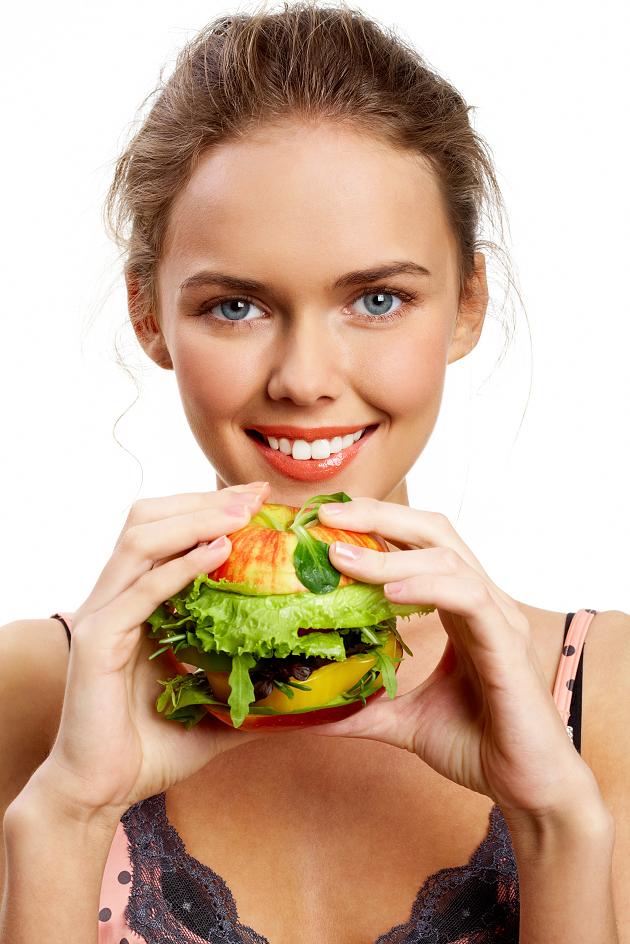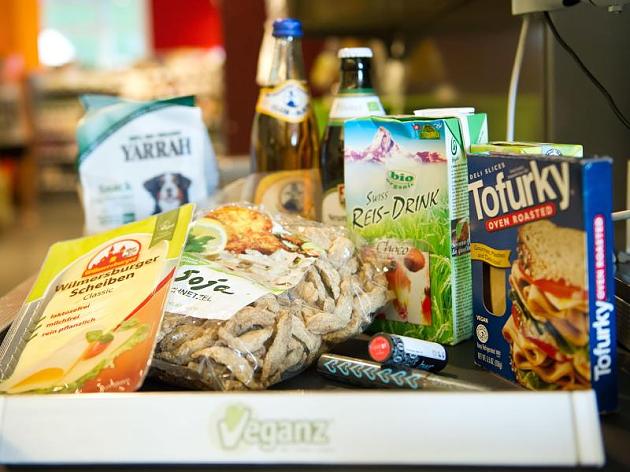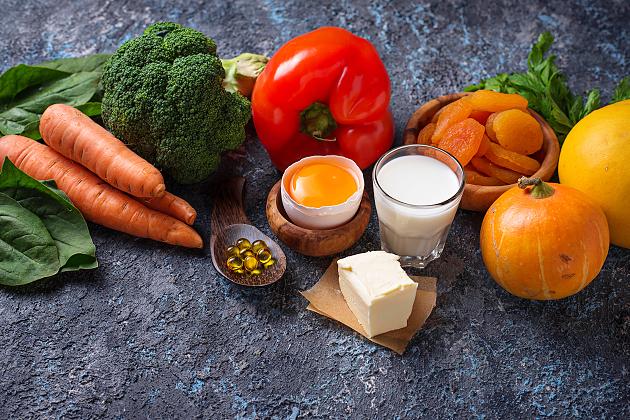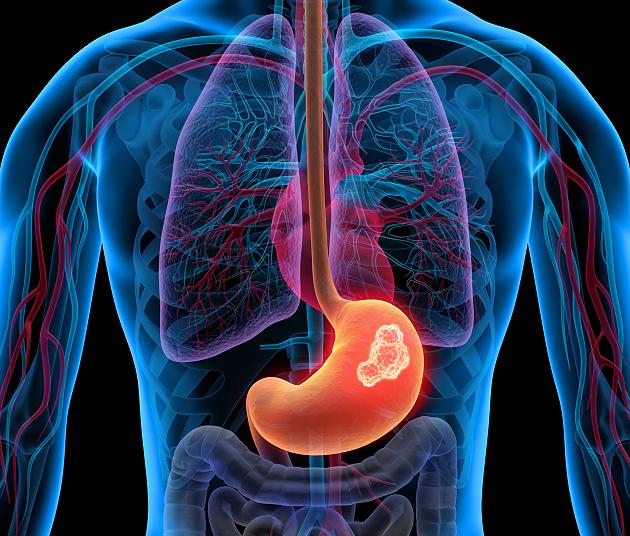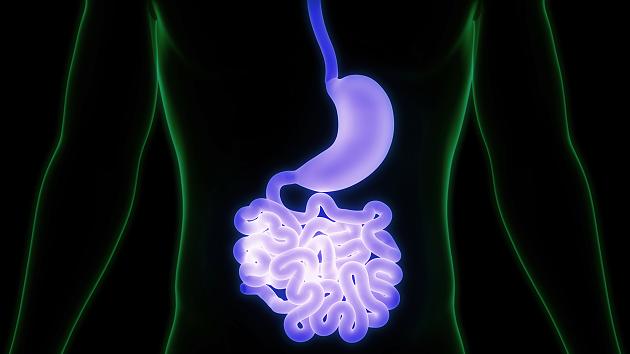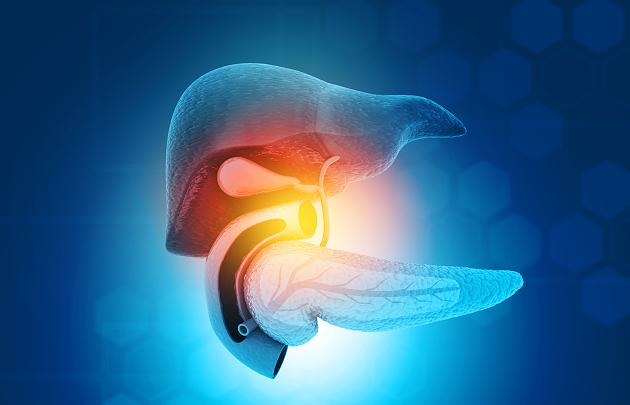Stomach cancer is not uncommon, with around 15,000 new cases per year on the list of carcinomas. 9,300 men and 5,600 women are affected. The cause of the gender difference is currently unknown.
Stomach cancer is not one of the most common cancers, but the chances of survival are not good. Two thirds ultimately die of the tumor disease. “We have to assume that three out of four patients will only be diagnosed in a locally extended or even metastatic situation,” reports Michael Stahl, head of the Clinic for Internal Oncology at the Evangelical Clinics Essen-Mitte (KEM).
This late diagnosis means that three quarters of the patients have a poor prognosis and cannot be cured with an operation alone, summarizes the oncologist, who is among other things the author responsible for the German guideline for the diagnosis and treatment of esophageal cancer and a member of the lead group of the working group for internal oncology for carcinomas of the stomach and esophagus.
Cause of stomach cancer unknown but there are risk factors
“The only good relative risk factor for stomach cancer is the stomach germ Helicobacter pylori”, the expert clarifies. That would be risk factor number 1.
However, around a quarter of Germans are infected with this bacterium, but only a fraction of them develop gastric cancer. Why they get sick is not yet fully understood, just as much is still unknown about the causes of stomach cancer.
There is also evidence that smoking increases the risk. And what about alcohol? “However, there is no meaningful evidence that alcohol also increases the risk of stomach cancer,” adds the oncologist. However, it can lead to gastric mucosal inflammation, i.e. gastritis, up to and including gastric ulcer (ulcer).
Chronic gastric mucosal inflammation and reflux disease could in turn increase the risk of stomach cancer at the junction with the esophagus.
Stomach cancer can also develop from previous operations on the stomach.
The reflux of bile is also considered a risk factor. This danger arises from being very overweight.
And on the subject of obesity and nutrition: Scientists assume that a one-sided diet with a lot of processed meat products, heavily salted, but also smoked and grilled foods promote stomach cancer – keyword nitrosamines, which are known to be carcinogenic. Rotten and moldy foods pose a general health risk, also with regard to stomach cancer.
Stomach cancer with certain genetic changes
In addition, there are genetic components in the development of gastric cancer: first-degree relatives (children, siblings) of patients with gastric cancer have an increased risk – i.e. if the father, mother or sibling are ill. In addition, stomach cancer can occur if a certain form of colon cancer is already present (hereditary colorectal cancer) or breast cancer.
These are patients with changes in their genetic makeup, for example what is known as microsatellite instability (MSI). You are at an increased risk of various types of cancer, including cancer of the stomach and intestines. “Doctors should keep this in mind if a patient has a colon cancer with microsatellite instability , or if there are multiple carcinomas in the family,” emphasizes the Essen-based oncologist.
However, all of these are only possible risk factors. “Of most patients who fall ill, we don’t know why, because none of these risk factors apply to them,” summarizes Michael Stahl.
Look out for these warning signs
Besides this, there is the second difficulty in gastric cancer – late diagnosis. This is because the symptoms are rather unspecific, affecting the stomach, but are often dismissed as harmless everyday complaints. Early signs can be:
- Feeling of fullness, pressure in the stomach
- general upper abdominal discomfort
- Eructation
- nausea
- Vomit
- Flatulence
- Loss of appetite
“Anyone who has one or more of these complaints for more than three weeks should have them checked out by a doctor,” advises Michael Stahl.
Do not treat persistent stomach problems with acid blockers on your own initiative
However, many sufferers do not take these symptoms seriously and try to relieve them first with self-medication – wasting valuable time on early cancer therapy and thus a high chance of recovery.
They resort to gastric acid blockers that are available over the counter or prescribed by doctors. The pain will actually go away. “Cancer itself does not cause the pain at the beginning of the disease, rather the mucous membrane defect it causes is irritated by stomach acid – and that triggers the pain,” explains the expert.
This pain disappears when the stomach acid is blocked because it no longer irritates the mucous membrane. The cancer growth is not influenced by this, the tumor can spread undisturbed.
The most important diagnostic tool – gastroscopy
The oncologist therefore urgently recommends that the complaints be clarified by a quality-assured endoscopy, i.e. in a gastroenterological practice that carries out these examinations on a daily basis or in an appropriate center.
The gastroscopy only takes a few minutes; the doctor can not only check the condition of the esophagus and stomach up to the duodenum, but can also test whether Helicobacter is present and possibly take additional tissue samples.
Usually no tumor is discovered, but rather the stomach germ or an enlargement or relocation of the area between the stomach and esophagus (hernia), which can cause reflux. A change in diet can help here or medication may be necessary. Sometimes, however, the doctor finds stomach cancer, “and more and more often in the transition area to the esophagus,” reports the expert from the practice.
The reason for this is that there are more and more people who are very overweight. “Being overweight puts pressure on the abdominal cavity, which is why bile acids and stomach acids flow back into the transition area to the esophagus, which is not designed for frequent contact with these acids and is therefore damaged,” says Michael Stahl, summarizing the chain of reactions.
How stomach cancer spreads
The treatment depends on the severity of the disease (grading):
- Whether the carcinoma is limited to the mucous membrane,
- already affects the underlying muscle
- in addition, the outer connective tissue of the stomach
- surrounding organs
- Lymph nodes
- Has metastasized.
In Asian countries, where the risk of stomach cancer is very high and gastric cancer screening is therefore carried out regularly, the cancer can often be detected early. If the diagnosis “stomach cancer” is made in the early stages, i.e. only the mucous membrane is affected, there is a high chance of recovery.
Unfortunately, this is extremely rare in Germany, explains the oncologist. In this country, stomach cancer is usually only discovered when it has worked its way deeper into the tissue or has already broken through the stomach. This is also the reason why the prognosis for stomach cancer in Germany is so unfavorable – the cancer is recognized very late.
Stomach cancer does not depend on age
How long the time span between gastric cancer in its initial stage and the appearance of metastases cannot be answered. However, Michael Stahl points out in this context that it is a cancer myth that the tumor only grows slowly in the elderly. “We also have elderly patients with rapidly growing stomach cancer, and young ones,” he warns. Young people should also take stomach problems seriously and not dismiss them: “I’m only 35, it can’t be something bad, like cancer.”
Treatments for stomach cancer – chemotherapy plus surgery
Only in the early stages, i.e. when stomach cancer is limited to the mucous membrane, surgery alone is the method of choice. Then it is the only way to cure the patient.
Most patients, however, need more than the operation, the scientist reports. For locally advanced tumors (without metastasis), treatment consists of chemotherapy, surgery and renewed chemotherapy. Chemotherapy before the operation is intended to shrink the tumor and combat (invisible) metastases at an early stage.
Antibody therapy for HER2-positive gastric cancer
In addition, chemotherapy plus antibody therapy with so-called HER2 antibodies is used for certain forms of metastatic gastric cancer. In around 20 percent of gastric cancer patients, HER2 receptors (HER2-positive gastric cancer) are found in particularly large numbers on the cancer cells. They are docking points for growth factors. Occupied by the special antibodies, tumor growth can slow down significantly.
By the way, HER2 receptors are also found on breast cancer cells, keyword HER2-positive breast cancer. This is where this antibody therapy, which incidentally does not count among the immunotherapies, was first used.
In addition, attempts are being made in Germany, the scientist reports, to treat HER2-positive gastric cancer with HER2 antibodies plus immunotherapy. Scientists hope that this will enable them to offer equivalent treatment without chemotherapy in the future. However, the effect of this combination of therapies has not yet been proven.
Immunotherapies for gastric cancer do not (yet) meet expectations
In some forms of cancer such as melanoma or lung cancer, immunotherapies, for example with checkpoint inhibitors, are considered particularly successful today. These drugs are also currently being tested in studies for gastric cancer .
“Unfortunately, the first results are sobering,” reports the scientist. He and his colleagues had hoped that immunotherapy could improve the effect of chemo, but this was not confirmed. “If, however, all therapy options have already been exhausted in a patient, more can be achieved with immunotherapy than without further tumor-specific treatment,” reports Michael Stahl about the studies.
The problem with this is that it is currently difficult to predict in which patients the immunotherapy will work and which will not. Only in the few patients (less than ten percent of all patients with gastric cancer) whose tumors show what is known as high microsatellite instability (MSI-H) can one predict that immunotherapy has a high chance of effectiveness. Overall, the risk of severe side effects under immunotherapy is significantly lower than under chemotherapy, namely 20 percent instead of 60 percent.
The prognosis for gastric cancer is poor because the patients are late
How successful are the therapies at a glance? “The chances of a cure for stomach cancer are on average 25 to 30 percent; if stomach cancer is metastatic, the average life expectancy is one year,” reports Michael Stahl. The prognosis is only very good at a very early stage. However, patients with gastric cancer in this easily curable stage would be the exception in practice because many go to the doctor too late.
Prevention of stomach cancer – three measures
This makes provision and prevention all the more important. This includes, on the one hand, having longer stomach complaints clarified by a gastroscopy – and it does not matter how old the person affected is.
On the other hand, everyone should pay attention to the following three factors. Because little is known about the development of stomach cancer, so few are:
- Pay attention to food hygiene, do not eat spoiled food, nothing that is moldy
- Do not smoke
- Avoid being overweight
This can not only protect the stomach, but is known to promote general health – not smoking and maintaining a normal weight are among the most important preventive measures against cardiovascular diseases such as high blood pressure, heart attack and stroke, but also against cancer.

